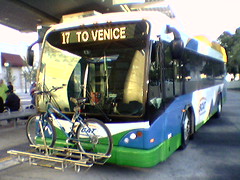Webinar Alert: National ITS Architecture Update: New Features of the Latest Version of the National ITS Architecture (Version 6.1)
Webinar Overview
National ITS Architecture Update: New Features of the Latest Version of the National ITS Architecture (Version 6.1)
Date: October 27, 2009
Time: 1:00–2:30 PM ET
Cost: All T3s are free of charge
PDH: 1.5. — Webinar participants are responsible for determining eligibility of these PDHs within their profession.
Register On-line
Contact the T3 Administrator
T3 Webinars are brought to you by the ITS Professional Capacity Building Program (ITS PCB) at the U.S. Department of Transportation’s (USDOT) ITS Joint Program Office, Research and Innovative Technology Administration (RITA). Reference in this webinar to any specific commercial products, processes, or services, or the use of any trade, firm or corporation name is for the information and convenience of the public, and does not constitute endorsement, recommendation, or favoring by U.S. Department of Transportation.
Webinar Description
The Architecture provides a common framework for planning, defining, and integrating intelligent transportation systems. It is a mature product that reflects the contributions of a broad cross-section of the ITS community (transportation practitioners, systems engineers, system developers, technology specialists, consultants, etc.). The National Architecture is required on ITS projects receiving funding in whole or in part from the Highway Trust Fund, including the Mass Transit Account.
This T3 will focus on new features found in Version 6.1 of the National ITS Architecture and the new Version 4.1 of the Turbo Architecture Software. This T3 Webinar is not an overview of the National ITS Architecture but will address some history and background. All transportation professionals are welcomed to attend but participants familiar with the National ITS Architecture will benefit most from the content being presented.
Resources for the use of the ITS Architecture will be discussed. Visit the FHWA Office of Operations for ITS Architecture Implementation Program for a list of resources for new and experienced users of the National ITS Architecture.
Audience
Anyone involved in planning, implementation, and operation of ITS systems, including Federal, State, and local transportation professionals, Metropolitan Planning Office staff, systems engineers, system developers, technology specialists, and consultants.
Learning Outcomes
- Ability to identify areas of the National ITS Architecture affected by changes to the framework.
- Understanding of new features available in Version 6.1 of the National ITS Architecture and their affect on the overall Architecture.
- Understanding of the deployment support and resources available to state and local agencies to aid in ITS implementation and support Rule 940 requirements.
- Understanding of new features in Version 4.1 of Turbo Architecture Software.
Host:
Emiliano Lopez, ITS Deployment Program Manager, FHWA Headquarters
Emiliano is currently the ITS Deployment Program Manager for ITS Regional Architectures and Systems Engineering in Washington DC. Prior to his assignment in Headquarters, Emiliano worked in the FHWA Resource Center providing technical expertise and assistance on ITS project development, review, deployment and operations/maintenance. He also provided expertise and assistance on ITS Standards. Before joining FHWA Emiliano worked at both the state and local levels with agencies such as the Virginia Dept. of Transportation, and the Cities of San Diego and Anaheim. Combined public agency work Emiliano brings over 20 years of experience to the agency. He has a Masters in Public Administration from Central Michigan University, and a B.S. in Civil Engineering and minor in Electrical Engineering from San Diego State University.
Emiliano provides training, outreach and technical support for the National ITS Architecture and Systems Engineering programs. He co-chairs FHWA’s Architecture Field Support Team, and FHWA’s Operations Council architecture and systems engineering working group.
Emiliano is a certified instructor for NHI. He teaches courses in ITS Software Acquisition, Systems Engineering and National ITS Architecture.
Presenters:
National ITS Architecture Team:
Cliff Heise, Iteris
Cliff has over 25 years of experience in the areas of project management and systems and software engineering throughout all phases of program development. He has been the Program Manager of the National ITS Architecture Program for Iteris since 1996 and has been involved in all aspects of the program’s outreach, maintenance, and management. Cliff has also managed the development and implementation of ITS Architectures at the state and local levels, most recently in Virginia, and has experience with the challenges and policy issues surrounding the application of the National ITS Architecture. Cliff is the Vice President of Federal and Research Programs for Iteris in Sterling, VA. He has a Bachelor’s Degree in Mathematics from Oklahoma State University.
David Binkley, Lockheed Martin
David Binkley is a Senior Systems Engineer at Lockheed Martin. He has 19 years experience in all aspects of Systems Engineering for government and commercial projects. He joined the National ITS Architecture Team in 1995 and has served as the program’s Principal Investigator / Chief Engineer for the past 6 years. Today he directs the maintenance updates to the National ITS Architecture. He is currently involved with testing the next release of Turbo Architecture and participating in numerous Deployment Support activities. David has a Bachelor’s in Electrical Engineering from Georgia Tech.
Click here to register.





